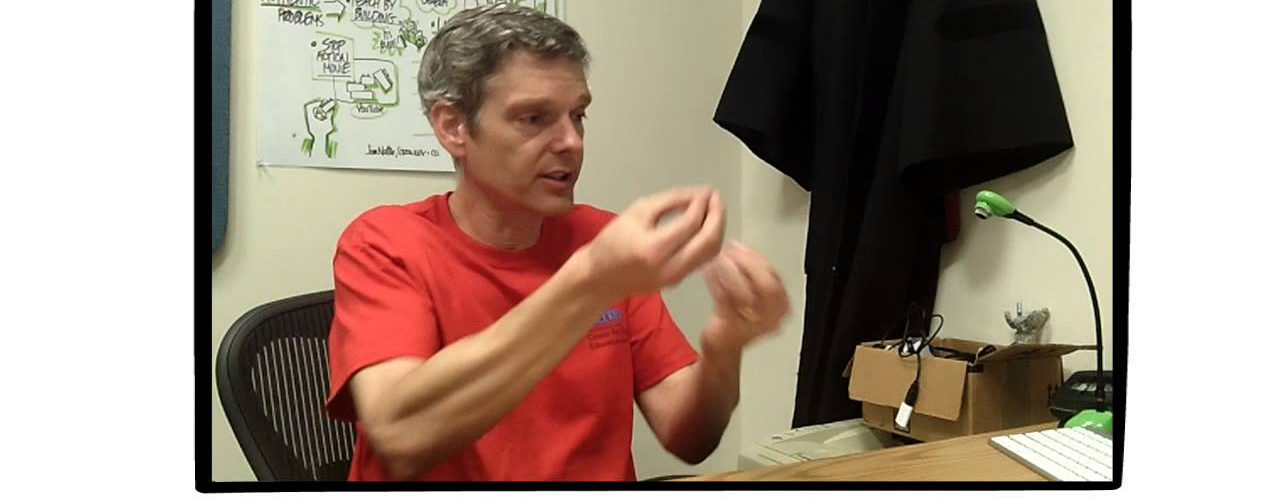A Conversation with Parent, Engineer, and Engaged Educator, Chris Rogers
(part 2 of a series of 3 pieces)
In part 1 of my conversations with Chris, we talked a great deal about story and balance as pivotal concepts when thinking about getting our kids engaged in their learning. Here, we dig a little deeper as to what happens in the classroom as far as engagment.
The Teacher’s Story
In studies that Chris’ group has done, they ask teachers to imagine a student coming back to the classroom after ten years and saying, “the one thing you taught me in your class that I really appreciated was… x”. They then get teachers to tell them what they would want x to be. Most teachers have a beautiful list involving such things as lifelong learning, curiosity, creativity etc. Then, the researchers asked how many of these are on a standardized exam? None.
Chris: We have a problem now because what the teacher really wants to teach is not what the assessment measures. So the first step is to ask the teacher what does he really want to teach? If it’s lifelong learning then the next step is to discuss with him how effectively does he think he’s really doing that? There are other models of teaching – how do those models compare to his model? It’s a research problem just like anything else. Some people I’ve talked to, no matter how much I do of this, there’s no changing them. Dammit I learned this way and I’m really smart so…it works, forgetting that not everybody is the same. I’ve never seen a teacher ever get really excited about a kid being able to parrot back everything the teacher said. Their favorite students are always the ones that have somehow gone on beyond, done something different. If you can say, what caused that, what enabled that, what did you do that got that student to go the extra step? How can we make it happen for that student – for whom it didn’t happen?
This is the kind of thinking we hope teachers do everyday!
What about Testing?
Do we get rid of the testing? Or change the testing?
Chris: The test could be – what is the diversity index across the classroom. Most tests look at trying to get one right answer – but a good test question is one that has MANY right answers. What is more important is looking at the evidence to support the answer. So an authentic question in an engineering class would give many different solutions – the wider the range, the better the question. In fact if everyone has the same answer, then the question must not have allowed for much creativity. We can’t simply fill in bubbles but computer systems may be able to analyze videos, or maybe we go back to the old system of believing the teacher – which has issues but everything has issues!
The bottom line is the same – we need to get kids (and teachers) to engage with the ideas. As Chris put it, I would hate to study basketball for three months before I got to play!
What about Time?
Does this kind of teaching (where students argue their versions of stories and) take too long? One of Chris’ doctoral students in math showed that this is not the case. In her study, she taught fractions using a successful conventional method. Then, for a second group of kids with the same age and same socioeconomic background, taught fractions using lego bricks. This made it open-ended and kinesthetic. She showed the gains across a 1-week intervention were roughly the same in both cases. This is a good thing because this shows that there is indeed time to teach in this second way. Both classrooms had the same amount of time spent on teaching the topic. Testing scores increased by the same amount. Seems like both methods work.
She also did a longitudinal study. Six months later she tested the students again. The first group that had been taught using conventional methods were almost back to where they were before. The other group remembered almost everything. It does not seem like it takes longer to teach for student engagement. It does seem like higher engagement leads to higher retention.
Does it take a lot longer to prep if you want to teach this way?
Chris: I don’t even think that – I teach this way all the time in college robotics class –asking questions like can you build a robot that can play a musical instrument? I’d never done that before, I didn’t try it before to make sure it would work, I sort of had confidence that we as a class would figure it out. I got all the different standards that I had to meet (robotics standards) but the difference was that they were asking to learn it. They were asking me to teach more image processing, more sensors and actuators, more artificial intelligence, so we could put it into our design. Now we (Tufts University) have a self-selected population of students who are very interested in learning but we’ve done this technique in Kindergarten as well!








Add comment